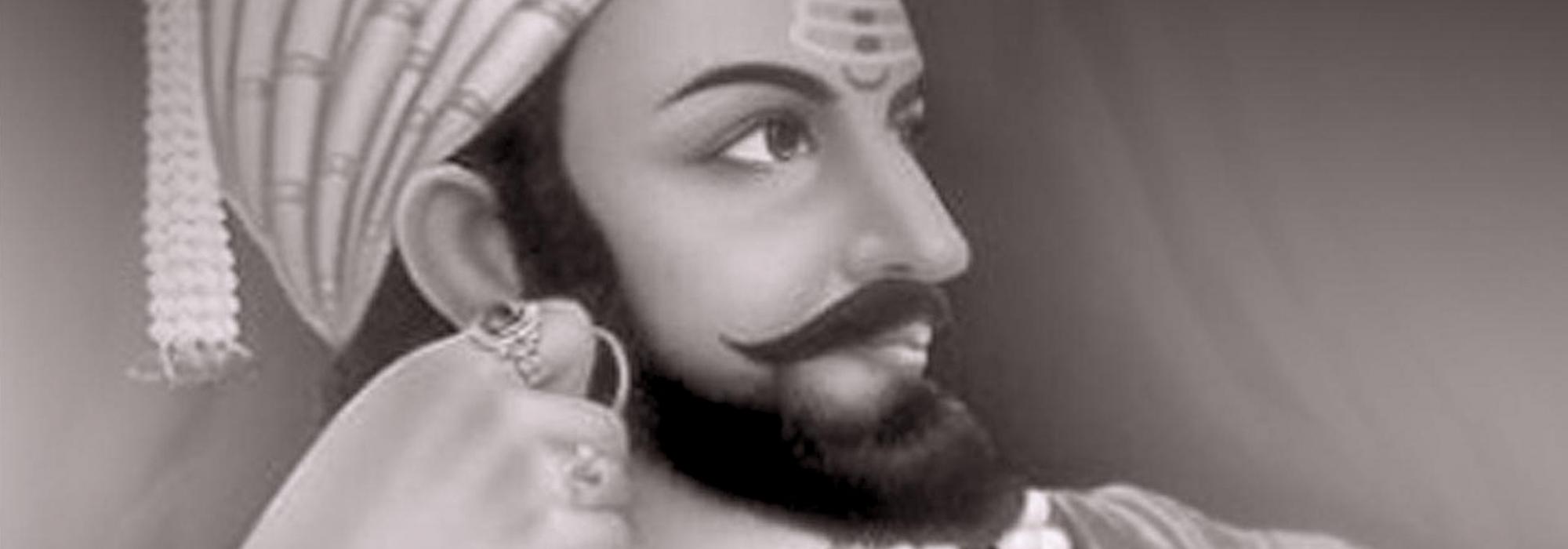The next great landmark of the tradition of the spirit of Kshatra is available in South India. He is the lodestar of Hindu Dharma, Chhatrapati Shivaji.
Shivaji hailed from the Bhosle lineage, considered as Shudras. His roots lie in the Mewad-based Sisodia clan. In other words, we can identify him with Rana Pratap’s lineage.
His mother Jijabai hailed from the Yadava (or Jadhava) lineage belonging to Devagiri. Although his father Shahaji began his career as a soldier for hire, he eventually graduated to becoming a Sardar. Shahaji identified himself as a loyalist of the Adilshahi Sultans of Bijapur and did not render much service to Sanatana Dharma. He arrived in the Bangalore and Kolar regions and ruled them for a few years. During that period, Shivaji had also accompanied him.
Jijabai who was carrying Shivaji in her womb refused to listen to any advice from her people and together with her husband, traversed the jungles and finally gave birth to Shivaji in a dense forest named Shivaneri. Right from his infancy, she told him stories of valour and courage and brought him up.
Build lakes, dig wells, construct temples and rest houses
Free the orphans who are caught in trouble, do good to friends,
Be loyal to those who trust you. (Vibhutipurusha Vidyaranya, p.96)
This was the advice given by Maharshi Vidyaranya’s younger sister, Singale to her child Lakshmidhara Amatya who went on to perform great feats when he grew up. This is recorded by a poet. Jijabai brought up Shivaji similarly.
In this fashion, Jijabai attuned Shivaji to Sanatana Dharma much before she actually gave birth to him. Apart from narrating the tales of valour performed by the warriors of the Devagiri Yadavas and the Mewad Rajputs, she also told him stories from the Ramayana and the Mahabharata. Shahaji appointed a soldier named Dadaji Kondadev to provide military training to Shivaji. Dadaji taught him both warfare and Shastra. Although Shivaji did not learn reading and writing, he acquired knowledge.
Although our ancestors weren’t literate, they were endowed with a high degree of learning. Today, a significant number of people have acquired advanced knowledge of the letters. However, they are uneducated in the true sense.
Shivaji had made it mandatory for his soldiers to learn the Yuddha Kanda of the Ramayana. He built an entire army by enlisting the Mawali tribals in the Aravali region. He had gotten a high degree of Samskara right in his childhood. As a result, he possessed the strength to face any kind of difficulty.
The Mughals relentlessly attempted to subdue the Bahamanis and imprison Shahaji, his wife Jijabai and son Shivaji. Jijabai willingly became their prisoner in order to save her son. In the end, she was freed after paying a large amount of money. Shahaji married another woman after abandoning such a compassionate and self-sacrificing lady. He completely forgot her. Bereft of her husband and relatives, this brave mother Jija spent the rest of her life believing only in her son. She earned the distinction of giving a great son to Bharata.
Shivaji had come all the way to Bangalore and even visited the Kadu Malleshwara Temple. In 1658 CE, he had visited Rakkasa-Tangadi and Hampi, more than hundred years after the cataclysmic Battle of Talikota had taken place. He witnessed the remnants of the tragic downfall of the mighty and prosperous Vijayanagara Empire, felt distressed and took inspiration from it. He even followed the administrative system of the Vijayanagara Empire. In contrast to the stagnant administrative system of the Mughal, Shivaji implemented a modern and progressive system in his dominions. Akin to how the Vijayanagara Empire was guided by Maharshi Vidyaranya, Shivaji found spiritual guidance from Samartha Ramadas. Ramdas never offered any political advice to Shivaji. Instead, he stood on a higher plane and gave Shivaji the vision of Vedanta. Shivaji used to regularly attend the discourses of the great Jnani and Bhakta of the Varakari Tradition, Santa Tukaram.
Both Samartha Ramadas and Santa Tukaram were Shivaji’s contemporaries. Born as a Brahmin, Samartha Ramadas eventually became a great embodiment of Vairagya (Renunciation); Tukaram was born in the Darji (tailor) Varna—considered to be low—and went on to become a great Bhakta and Santa. Society regarded both with equal regard and reverence. In this manner, there was a healthy mix of both Pravritti (action) and Nivritti (renunciation) during Shivaji’s period.
The Nizamshahi had publicly murdered Jijabai’s father, mother, brothers and their children. The Sultan of Paltan had attempted to forcibly convert Jijabai’s clan into Islam. It was for this reason that Jijabai was furious at this barbarism of Muslim rulers. She didn’t like her husband serving under the Bijapur Sultan one bit. The husband and wife used to have frequent clashes on this matter.
On one occasion, Shahaji had taken his son Shivaji to the court of the Bijapur Sultan and asked him to perform the Mujra (offering respectful salute to a ruler) before him. To which Shivaji said, “I will do Namaskar only to my mother, father, Guru and elders. Not to this man.”
While going to the Sultan, Shivaji saw a butcher attempting to kill a cow. He promptly chopped off the butcher’s hands. In the Sanatana tradition, there is a rule which says that the king should protect the cow and the Brahmana (meaning, those who live by eternal values). Shivaji followed this without fail, throughout his life.
To be continued

















































